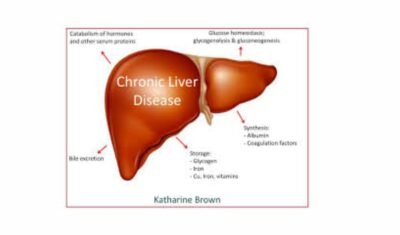Chronic liver disease icd 10 is a significant health concern affecting millions of people worldwide. In the medical field, the International Classification of Diseases, 10th Edition (ICD-10), plays a crucial role in diagnosing and tracking various diseases, including chronic liver disease. In this article, we will delve into the world of chronic liver disease, its ICD-10 codes, and everything you need to know to better understand this condition.
Chronic Liver Disease
Before we dive into the specific ICD-10 codes, let’s first understand what’s chronic liver disease.
What Is Chronic Liver Disease?
Chronic liver disease is a long-term condition characterized by the gradual destruction of liver tissue over time. It encompasses a wide range of liver disorders, including cirrhosis, hepatitis, and fatty liver disease. This disease can progress silently, often without noticeable symptoms, until it reaches an advanced stage.
Might You Like – Is Digesting Food a Chemical Change?
The Significance of ICD-10 Codes
Now, let’s explore the importance of ICD-10 codes in the context of chronic liver disease.
What Are ICD-10 Codes?
ICD-10 codes are alphanumeric codes used by healthcare providers to classify and code various diseases, conditions, and medical procedures. These codes serve several crucial purposes, including insurance billing, medical research, and tracking disease trends.

Why Are ICD-10 Codes Important for Chronic Liver Disease?
ICD-10 codes are instrumental in accurately diagnosing and treating chronic liver disease. They enable healthcare professionals to document and communicate the specific type and severity of the disease, leading to more effective patient care and research.
Common ICD-10 Codes for Chronic Liver Disease
Here, we’ll outline some of the common ICD-10 codes associated with chronic liver disease:
ICD-10 Code: K70.30 – Alcoholic Cirrhosis of Liver without Hepatic Coma
This code is used to specify alcoholic cirrhosis of the liver without hepatic coma. It helps healthcare providers differentiate between various types of cirrhosis.
ICD-10 Code: K73.0 – Chronic Persistent Hepatitis B without Delta-Agent
Chronic hepatitis B is a significant contributor to chronic liver disease. This code is used to classify cases of chronic persistent hepatitis B without the presence of the delta agent.
ICD-10 Code: K76.0 – Fatty (Change of) Liver, Not Elsewhere Classified
Fatty liver disease is becoming increasingly common. This code is used when diagnosing cases of fatty liver that do not fit into other specific categories.
Diagnosis and Management
Let’s explore the diagnosis and management of chronic liver disease.
Diagnosing Chronic Liver Disease
Diagnosing chronic liver disease involves a combination of medical history, physical exams, blood tests, imaging studies, and, in some cases, liver biopsies. Accurate ICD-10 coding is essential in this process.
Managing Chronic Liver Disease
The management of chronic liver disease often includes lifestyle modifications, medications, and, in advanced cases, liver transplantation. Early diagnosis and intervention are crucial for improving outcomes.

Prevention and Lifestyle Tips
Preventing chronic liver disease is possible with the right lifestyle choices.
Prevention Strategies
- Limit alcohol consumption.
- Get vaccinated against hepatitis B.
- Practice safe sex to prevent hepatitis transmission.
- Maintain a healthy weight and balanced diet.
Lifestyle Tips
- Avoid excessive alcohol consumption.
- Follow a liver-friendly diet rich in fruits and vegetables.
- Exercise regularly to maintain a healthy weight.
- Get regular check-ups and screenings for early detection.
Final Words
In the Final Words, chronic liver disease, as classified by ICD-10 codes, encompasses a wide range of liver disorders that require careful diagnosis and management. Understanding these codes is essential for healthcare providers to provide accurate treatment and for researchers to track disease trends effectively.

